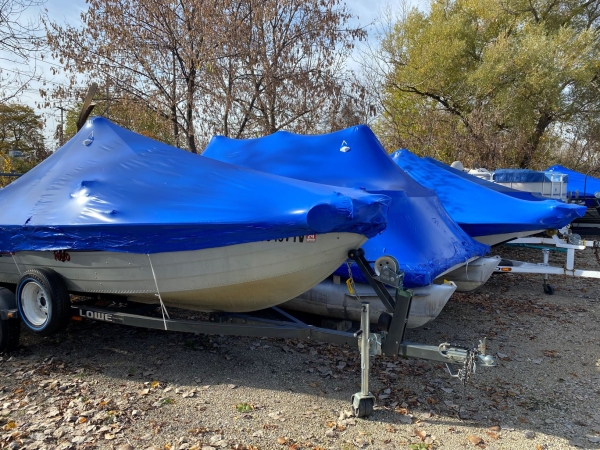If you live in a state such as Michigan or any state that experiences a deep freeze or cold months you should really consider winterizing your boat. The question at this point is whether you do it yourself or take it into a professional. If you take it to a reputable marina you know that they will do a great job without skipping any steps in the process. If you decide to do it on your own, I would suggest to make sure you have all the needed supplies and create a checklist of all tasks you will need to do for the winterizing process.
When we winterize boats here at Vans Sport Center, we make sure that we get rid of any water in the boat and motor first. This is a crucial part in the winterizing process. If you are winterizing your boat on your own make sure to drain all the water from pipes, plumbing lines, exhaust manifolds, sewage tanks, and most importantly, the engine. Leaving any water in these areas will most likely cause significant and costly damage.
Next, we add a fuel stabilizer to the fuel. It is important to make sure that the stabilized fuel is distributed throughout your fuel system. After that we will go ahead and lubricate or change the engine oil (if it is a four-stroke). Next we will change the gear lube in the lower unit. If the gear lube comes out looking milky, that means that there is likely water in the lower unit. If this is the case it looks like you will need new seals and a water pump kit, but we will save all of that for a different post. Lastly, we fog the cylinders with a fogging oil and grease all of the joints and bearings.
Once the motor is winterized we also suggest that you shrink wrap your boat. This step is a must do if you are planning on storing your boat outdoors for the winter. Shrink wrapping your boat not only helps keep water out but heavy snow build-up as well. The last thing you want when spring comes around is a tub full of water or to be shoveling snow out of the boat. If you choose to not shrink wrap your boat for what ever reason, it would be a good idea to get yourself a quality cover. Don't just use that tarp you got at the hardware store because it saved you a few dollars. Protect your investment and make sure that your cover is designed to handle the extra weight of snow build-up and that it fits snug to the boat. Some people also like to place moth balls in the boat to deter any critters who are looking to chew on wires or find a nice dry place to call home. Once you have a solid cover, find a way to raise the bow high enough to create a slight angle. Also don't forget to remove the drain plug! This step is important for storage because it provides drainage for any water that may enter the boat over the next few months.


